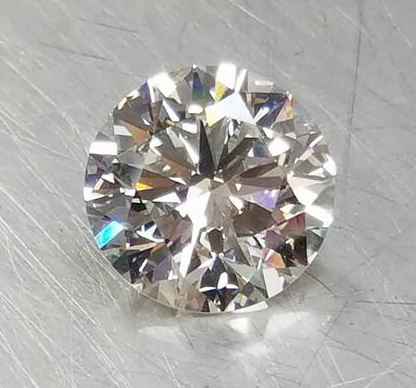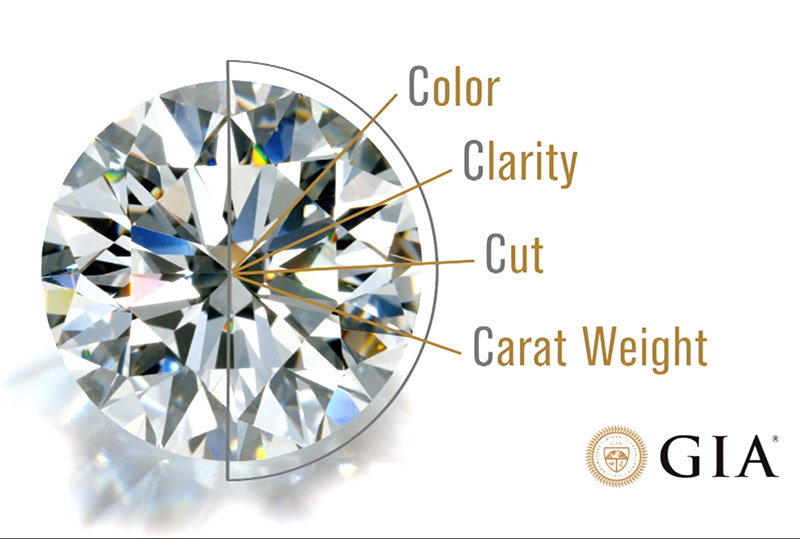Objectivity and independence are the hallmarks of all GIA reports and services, and GIA has elaborate processes in place to ensure a diamond’s anonymity through the grading process. Upon arrival to the laboratory, every diamond is placed in a custom designed, transparent storage case, and all references to its owner are removed or concealed. It is assigned a bar-coded label with a unique internal identification number that is used to track it throughout the process. Furthermore, client information is masked within the software diamond graders use to enter their assessments. We ask that our clients assist us in this process by submitting items in parcel papers free of information that identifies them as the client or refers to grading information.
Weights and Measures
Diamonds are weighed with an electronic micro-balance that captures their weight to the fifth decimal place. An optical measuring device determines their proportions, measurements, and facet angles.
Grading Color
Since light source and background can have a significant impact on the appearance of color, the diamond’s color is graded in a standardized viewing environment. Color graders submit their independent opinions into the system. During this phase, graders are not privy to color opinions entered previously. The color grade is determined when there are sufficient agreeing opinions.
Grading Clarity and Finish
Clarity is graded with 10x magnification under standard viewing conditions. The preliminary grader carefully examines the diamond to locate clarity/finish characteristics and evidence of any diamond treatments, such as fracture filling or laser drilling.
The preliminary grader assigns an opinion of the diamond’s clarity, polish and symmetry, then plots the clarity characteristics on a diagram most representative of the diamond’s shape and faceting style, which is selected from a database of hundreds of digitally stored diagrams. During this step, the grader verifies all previously captured weight and measurement data and assigns written descriptions of the diamond’s culet and girdle thickness. For a round brilliant cut diamond, this measurement data, along with polish and symmetry assessments, is used to determine its GIA Cut Grade. Additional steps are also taken during this grading process, and all others, to check and double check for indicators of known diamond treatments and synthetics.
A second grader then carefully and thoroughly examines the diamond to locate and identify clarity/finish characteristics and, again, the presence of any diamond treatments. This grader performs all the same grading steps done by the previous grader and then enters an independent opinion on clarity/polish/symmetry.
Depending on the diamond’s weight, quality, and the agreement of grading opinions, additional quality assurance process steps are also performed. More experienced staff gemologists may review all of the previous grading information and render independent clarity/polish/symmetry opinions. Grading results are finalized once there are sufficient agreeing opinions.
Grading Cut
GIA provides a cut quality grade only for standard round brilliant diamonds that fall in the GIA D-to-Z color range.
After the color and clarity grading process, the diamond’s proportions (measurements and facet angles), along with polish and symmetry descriptions, are used to determine its GIA Cut Grade. A diamond’s brightness, fire, scintillation (sparkle and pattern), weight ratio, and durability, as well as polish and symmetry, are all considered within this final assessment of cut quality.
Inspection, Care and Handling Procedures
At every step of the grading process, special inspection, care, and handling procedures are in place to protect a diamond’s identity and ensure the diamond is managed with the utmost care.
Inventory Control and Routing
GIA’s Inventory Control Department serves as the hub for laboratory operations. Between grading process steps, a diamond is distributed from and returned to this department, ensuring that the distribution of diamonds to graders is completely random. This is just one of several critical measures in an independent and impartial grading process.
Every diamond is tracked electronically so that the laboratory can pinpoint its exact location at any time, and review each step during the grading process. With thousands of diamonds, and hundreds of diamond graders, the routing and tracking of the GIA laboratory’s inventory requires a highly trained and alert staff, combined with the best support technology can offer.



